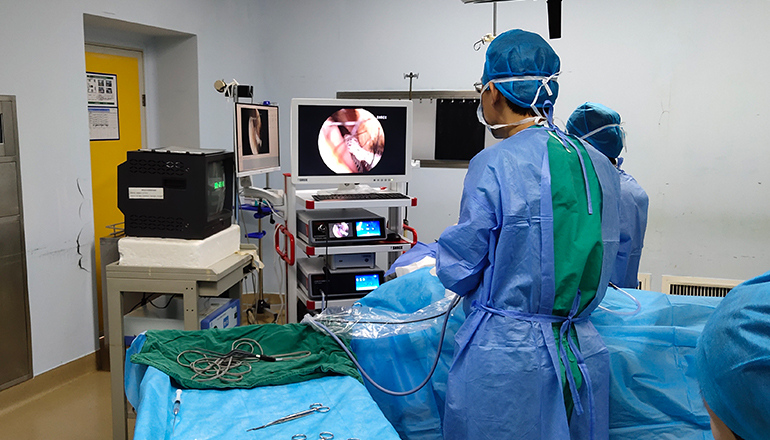- Shanghai, China
- [email protected]
- +86-21-58189111
ENT (ear, nose, and throat) endoscopy is a minimally invasive surgical technique that has revolutionized the field of otolaryngology. The use of endoscopes allows for improved visualization and access to the surgical site, reducing the need for traditional open surgery. In this article, we will discuss some of the surgical ideas and concepts of ENT endoscopy.
Endoscopic sinus surgery: This is a common application of ENT endoscopy, used to treat sinusitis and other sinus-related conditions. The surgeon inserts a small endoscope into the nose, allowing for visualization of the sinuses. Through small incisions, the surgeon removes tissue and bone to improve drainage and alleviate sinus pressure.
Laryngeal and vocal cord surgery: ENT endoscopy can also be used to treat laryngeal and vocal cord conditions, such as vocal cord nodules or polyps. The surgeon inserts an endoscope through the mouth or nose to visualize the larynx and vocal cords. Using specialized instruments, the surgeon can remove the polyps or nodules, or repair other laryngeal issues.
Endoscopic ear surgery: The use of endoscopes in ear surgery has also become more common in recent years. The surgeon can visualize the ear canal and tympanic membrane (eardrum) without the need for traditional open surgery. This can allow for more precise repairs of eardrum perforations or removal of tumors in the middle ear.

Endoscopic skull base surgery: This is a specialized application of ENT endoscopy, used to treat skull base tumors and other conditions. The surgeon inserts an endoscope through the nose, allowing for access to the base of the skull. This can allow for safer and more precise removal of tumors or repair of defects in the skull base.
Some of the concepts and techniques involved in ENT endoscopy include the use of specialized instruments, such as endoscopic forceps and scissors, to perform procedures through small incisions. The surgeon must also have a good understanding of anatomy and the location of critical structures, such as nerves and blood vessels, to avoid complications.
In addition, proper lighting and visualization are essential for successful ENT endoscopy. The surgeon must use high-quality endoscopes with good illumination, and the operating room must be appropriately lit to allow for clear visualization of the surgical site.
Furthermore, advancements in technology have improved the capabilities of ENT endoscopy. For example, the use of 3D endoscopy and augmented reality technology can provide even greater visualization and precision during surgery.
Finally, patient selection is an important factor in the success of ENT endoscopy. The surgeon must carefully evaluate each patient to determine if they are a good candidate for endoscopic surgery. Patients with severe medical conditions, extensive scarring or inflammation, or other factors that could increase the risk of complications may not be suitable for endoscopic surgery.
In conclusion, ENT endoscopy is a valuable tool in the field of otolaryngology. Its minimally invasive approach, combined with specialized instruments, anatomical knowledge, and proper lighting, allows for safer and more precise surgical procedures. As technology continues to advance, the capabilities of ENT endoscopy will only continue to improve, leading to better outcomes for patients.
Leave a Comments